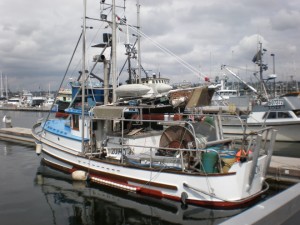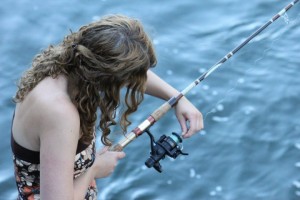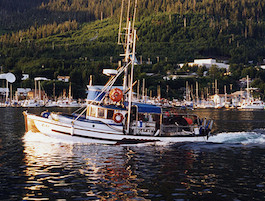“Seafood fraud” is big business and a big problem.
Officially the term refers to any action that misrepresents or mischaracterizes seafood in the supply chain — including species substitution.
According to a study by Oceana (an international organization focused solely on ocean conservation), “recent studies have found that seafood may be mislabeled as often as 25 to 70 percent of the time for fish like red snapper, wild salmon, and Atlantic cod, disguising species that are less desirable, cheaper or more readily available.”
Food Safety News recently provided an update on potential changes to seafood fraud regulations. The White House has established a Presidential Task Force on Combating Illegal, Unreported and Unregulated Fishing and Seafood Fraud and requested comments from the public to help inform and advise the task force in developing recommendations for the president.
 Why wait for legislation and regulation? There are some simple steps you can take to avoid illegal, unreported, or mislabeled seafood now.
Why wait for legislation and regulation? There are some simple steps you can take to avoid illegal, unreported, or mislabeled seafood now.

1. Know your fisher(wo)man – personally, by name. Even better if you’ve been on or near their fishing vessel.
2. Know your fish – and buy it in as large a piece as possible, whole or nearly whole is better.
3. Learn the Latin (species) name, and ask what the “common name” means. Trust me on this, you’ll draw a lot of blank stares…
Chinook salmon (King): Oncorhynchus tshawytscha
Chum salmon (Keta): Oncorhynchus keta
Coho salmon (Silver): Oncorhynchus kisutch
Pink salmon: Oncorhynchus gorbuscha
Sockeye salmon: Oncorhynchus nerka
4. Know your fish monger – again, personally, by name if possible.

5. Buy fresh (or under special conditions, frozen at sea) and buy local. If you live in Puget Sound, buy local oysters instead of Gulf oysters, wait for the spot prawn season rather than buy Gulf shrimp. If your fish is “branded” – Bristol Bay Salmon, Cedar River Salmon, or Bruce Gore Frozen-at-Sea, you have a way to understand where the fish came from or the method of processing.
And a special note: while you may not actually see it, every Bruce Gore fish is tagged with a number identifying the fishing vessel and the date and location of the catch. As the fish are handled in seafood markets and restaurants, the tag is removed.
6. Catch it yourself… and have a little fun!
True, it’s tough to follow all these recommendations all the time. If you must buy frozen or cut fish, read the country of origin and method of catch/production on the package or label. For example, if words like, “farmed, Indonesia” appear anywhere on the label, avoid it.
Resources
Read more from this collection of exclusive GoodFood World articles that introduces the many people who work together to bring sustainably harvested and carefully handled finfish and shellfish to your table.
Books
The End of the Line: How Overfishing Is Changing the World and What We Eat
Shell Games
Four Fish by Paul Greenberg
5 Easy Pieces: The Impact of Fisheries on Marine Ecosystems
Videos
Catching and Cooking Salmon – The Loki Way
Daniel Pauly: The Ocean’s Shifting Baseline
Salmon Confidential
In the Same Boat
Chris King Brings Sustainable Seafood to Town and Country Markets
Keeping Afloat: Supporting Small, Local Commercial Fishermen

